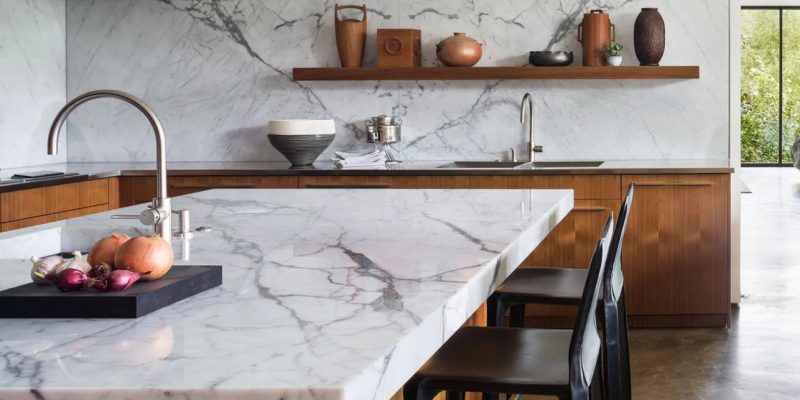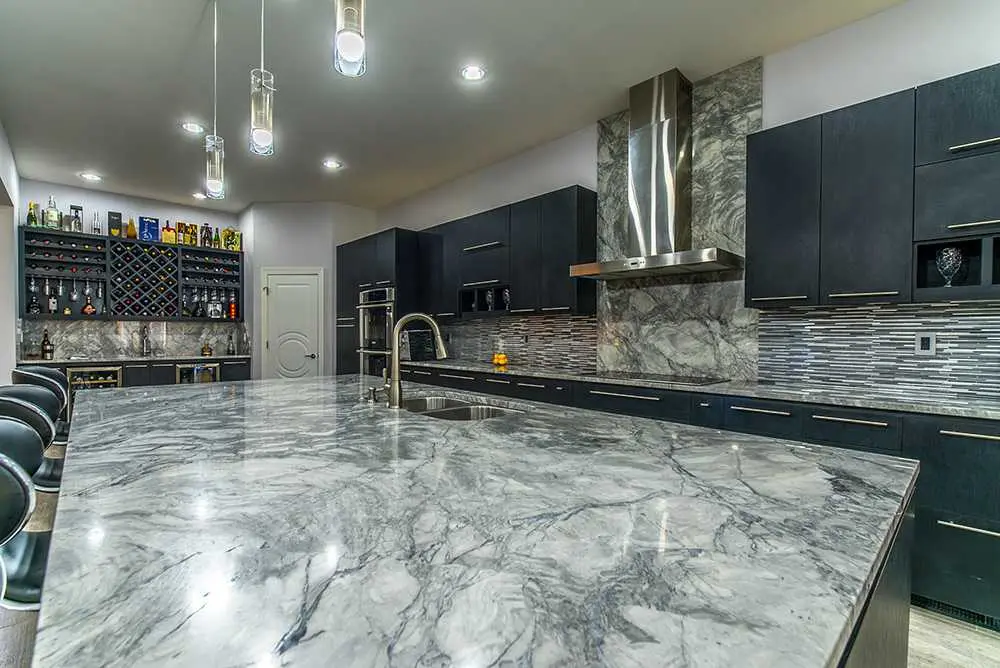


The pale, white stone with gray veins, known as marble, has been favored by humans for millennia. There’s a lot to admire about this sturdy natural stone – from its sleek finishes to its powerful associations with grandeur and luxury. However, its high maintenance has influenced homeowners to seek out other marble countertop alternatives. Stones like quartz, granite, and quartzite have a similar look but don’t require as much meticulous effort to keep in mint condition.
Despite its beauty, white marble may not be the best choice for everyone. The stone has a reputation for being easily chipped, stained and etched — a marble counter requires regular upkeep and maintenance to stay in excellent condition.

Marble is a durable heat-resistant stone; however, it must be handled with care. It is far more porous than granite and quartz and reacts adversely to harsh cleaning materials that are not pH-neutral and any liquid or food spills that contain a high level of acidity.
While undeniably beautiful, marble scratches etches, and stuns easily, even after being sealed. To provide you with an example, water spilled and left too long on a marble counter will cause a stain unless wiped away immediately. Despite this, the majority of marble stains are barely visible and can usually only be seen if looking at the surface from a particular angle.
All marble countertops should be sealed upon installation and then every 6-12 months after that, depending on the type of stone and how often it is used. Marble needs to be wiped down and/or cleaned directly after use with mild soap and/or a damp microfiber cloth. especially when preparing oily and acidic foods. Trivets are recommended when using hot pots and pans.
Stubborn stains caused by oil or paint may have to be removed with a poultice. This entails placing a special DIY or store-bought paste over the affected area for approximately 24-48 hours to draw out the stain. If a poultice doesn’t work, this may require professional help to buff out the stain and reseal the countertop at an additional cost.
If a marble countertop is used extensively, then placing a silicon sheet over it will help maintain the longevity of its polished or honed surface. In fact, any object, whether liquid or fresh produce, shouldn’t really be placed directly on the counter.
Porcelain stands out as a durable and aesthetically pleasing option. Unlike marble, porcelain is resistant to staining, chipping, and cracking, making it a practical choice for high-traffic areas like the kitchen. Its versatility also allows for various applications, including kitchen and bathroom worktops, wall cladding, and flooring.
The main difference between marble and granite as a countertop material is that marble is a softer stone and is more prone to staining. chipping, or cracking. Conversely, granite is a hard and durable igneous rock with minute amounts of mica and other minerals. It comes in a wide array of colors, ranging from white to beige. and with darker mineral grains visible throughout the rock.
Quartz, on the other hand, is an engineered stone surface. It’s designed to enhance the best qualities of natural stone to create a kitchen countertop material that’s unparalleled in terms of durability. Quartz doesn’t stain, it’s resistant to scratches and chips, as well as water damage. It also has great anti-bacterial qualities, making it resistant to mold and bacteria.